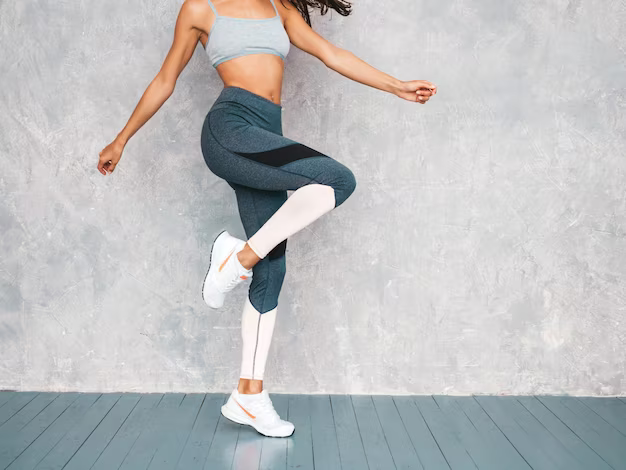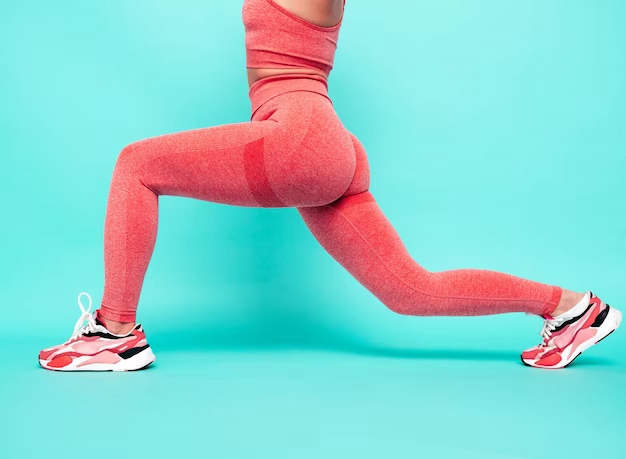Declared by various names such as violin hips, high hips, or popularly known as hip dips, these unique physical features can play a significant role in one’s body image. This comprehensive guide aims to equip readers with practical approaches on how to manage hip dips and empower them to embrace their natural body shape confidently.
These notable indentations that appear on the hips’ sides occur due to the structure of one’s pelvis, presenting a certain challenge to alter or diminish.
While eliminating hip dips completely may not be feasible due to genetic factors, a combination of strategic exercises and healthy lifestyle modifications can undoubtedly help diminish their prominence, leading to a more filled-out and curvaceous silhouette.
It’s completely normal to have uncertainties or insecurities about certain aspects of our bodies. Some individuals might be conscious about their areola’s dimensions, others could be looking to reduce excess skin, and many face concerns regarding hip dips. However, it’s crucial to remember that these sentiments are shared by many.
A considerable number of individuals grapple with similar concerns, but thankfully, various strategies can alleviate them. For those determined to bring about a change and eager to explore possible solutions, professional organizations such as Silhouette can offer much-needed guidance and assistance.
Understanding Your Body: Hip Dips Decoded
When it comes to the multitude of body shapes and sizes, the term ‘hip dips’, or ‘violin hips’, as they are often called, frequently surfaces. This feature, noticeable in many women, often leads to a series of questions and sometimes even body image issues. However, understanding the nature of these dips provides reassurance that such features are not irregular or undesirable.
Hip dips pertain to slight indentations that appear in the hip area, disrupting the otherwise smooth, curved silhouette many women strive to achieve. These indentations give the hip a unique contour instead of the common full, rounded appearance.
More often than not, people mistake these dips for an outcome of weight fluctuations. However, the truth is that hip dips are a product of individual skeletal structure and have minimal to do with body fat or weight gain.
The prominence of hip dips varies from person to person. While some may not even notice them, others might have deeper dips, making them more noticeable. It’s not uncommon for people to face difficulties in minimizing their appearance despite dedicated exercise regimes or controlled diets.
However, an important point to emphasize is distinguishing hip dips from love handles. While both are features of the hip, they differ in their causes and locations. Love handles occur due to excess fat accumulation around the waist, while hip dips are natural indentations in the hip bone structure.
Decoding Hip Dips and Love Handles
A multitude of unique body features exist, each with their distinct characteristics and origins. Among these are ‘hip dips’ and ‘love handles’—two terms you’ve probably heard in fitness or body image discussions. Both relate to the hip region but differ significantly in their nature and causes.
Commonly termed ‘love handles’ or the ‘muffin top’, this feature refers to the excessive fat accumulated around the hips and abdomen. This bulging fat layer often becomes pronounced when one wears snug clothing, but it’s essential to note that clothing isn’t the primary cause of this feature—it merely makes it more noticeable.
On the other side of the spectrum are ‘hip dips’—indentations visible on the sides of the hips. Unlike love handles, these are not linked with excess body fat. Instead, they are connected to the natural structure of the pelvic bones in your body.
Those seeking to address love handles or hip dips have two broad avenues: physical exercise or cosmetic surgery. Each method comes with a unique set of pros and cons, which we’ll delve deeper into in due course.

Maximizing Your Workout: Exercises to Minimize Hip Dips
While hip dips are a natural part of your body structure, incorporating specific exercises that focus on muscle building can help reduce their appearance. To achieve desired results, exercises should target the glutes, outer thighs, and inner thighs.
Although a gym membership can be beneficial, it is not necessary as many of these exercises can be done at home with minimal equipment. A light resistance band, ankle weights, or dumbbells should suffice.
Here are some effective exercises and a step-by-step guide on how to perform them:
1. Squats: A powerhouse workout, squats strengthen the abductor and quadricep muscles.
- Stand with feet slightly wider than shoulder-width apart, toes slightly outward;
- Engage your glutes and abs;
- Simultaneously bend your hips and knees as if sitting on an imaginary chair, keeping your back straight and feet flat;
- Return to original position.
2. Curtsy Lunges: This exercise targets the gluteus medius muscles and inner thighs.
- Stand with feet together and hands on waist;
- Step back with one leg, crossing it behind the other;
- Bend both knees, hold, then return to starting position;
- Repeat with the opposite leg.
3. Curtsy Step Downs: A variation of the curtsy lunge, this exercise offers a greater range of motion.
- Stand on an elevated surface like a stool;
- Step down and cross behind the standing leg;
- Bend your front knee until the back foot touches the ground;
- Repeat with the opposite leg.
4. Banded Lateral Walks: Great for engaging glutes and abductors.
- Place a resistance band around your legs at knee level;
- Maintain a bent knee position and feet shoulder-width apart;
- Engage your core and keep chest up;
- Step laterally, keeping your feet pointed forward;
- Repeat all reps on one leg before switching.
5. Banded Clam Shells: Also known as hip openers, this exercise strengthens the glutes and improves rotation.
- Lie on your side with a resistance band around your legs at knee level;
- Bend your legs at the knees, stacking your feet;
- Rotate your top knee toward the ceiling, keeping your heels together;
- Pause, then repeat on the other side.
6. Side Leg Raises: This exercise targets the glutes through hip abduction.
- Lie on your side with a resistance band around your legs just above the knees;
- Keep your legs straight, stacked;
- Raise your entire top leg upward, keeping your feet pointed;
- Pause, then slowly return to the starting position.
7. Fire Hydrants: This exercise strengthens the glutes, improves hip mobility, and stabilizes the core.
- Start on all fours, keeping your back flat;
- Lift one leg off the floor, rotating the hip to the side, keeping the knee bent;
- Draw a circle with the knee, engaging the core and keeping the back flat;
- Repeat evenly with both legs.
Gluteus Minimus Exercises for Targeted Enhancement
In our quest to comprehensively address the topic of managing hip dips, it’s imperative not to overlook the importance of the gluteus minimus muscle. This often-neglected muscle plays a pivotal role in achieving a more balanced and shapely hip region. To enhance the effectiveness of your hip dip reduction journey, consider incorporating specific gluteus minimus exercises into your routine.
Let’s sum it up
In summary, embracing your natural physique is vital. If you wish to alter the appearance of your hip dips, targeted exercises can help. Remember, consistent effort and patience are key to witnessing changes. Engaging in these exercises regularly will not only reduce the appearance of hip dips but also contribute to overall body strength and fitness. Wishing you an empowering journey to body positivity!
